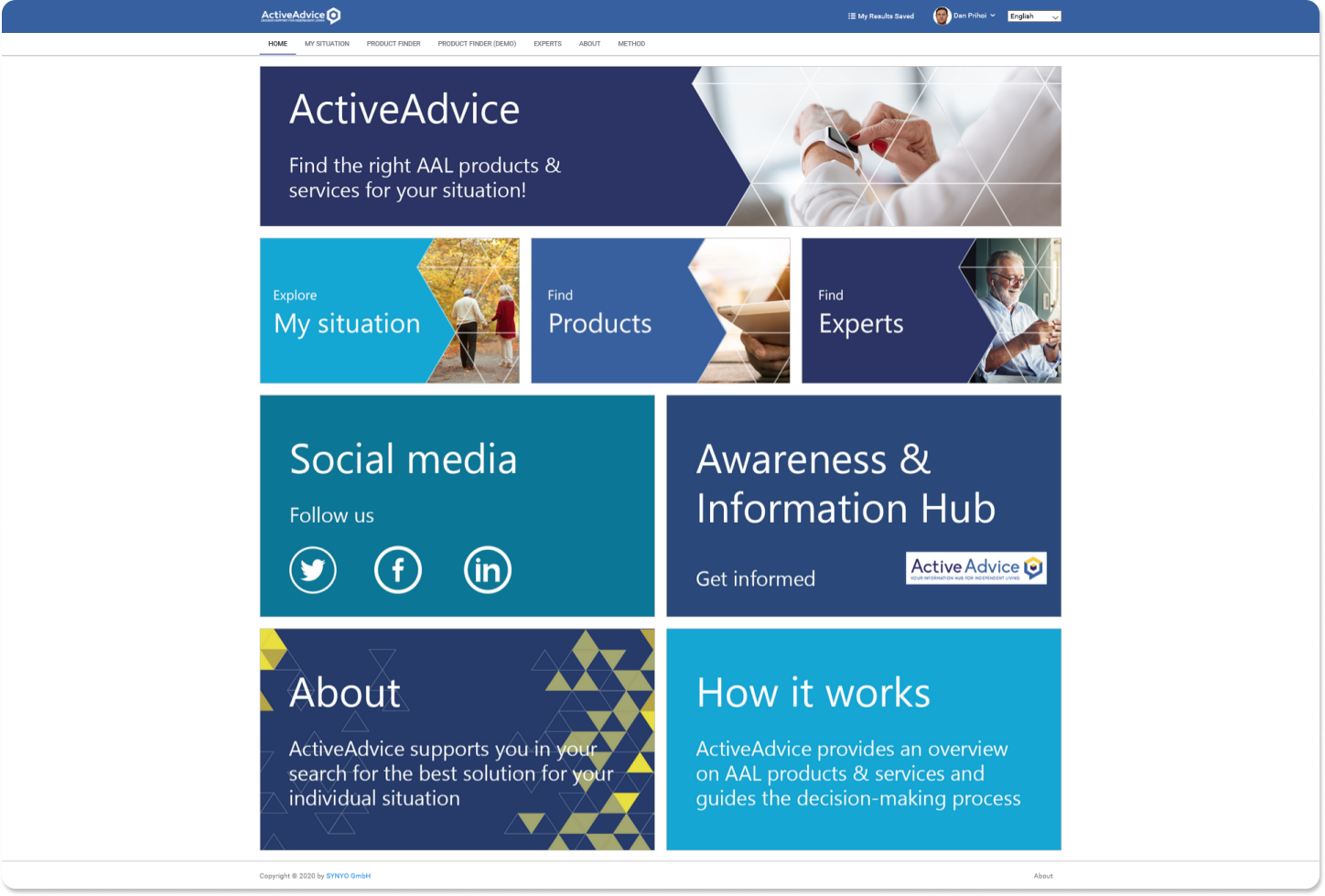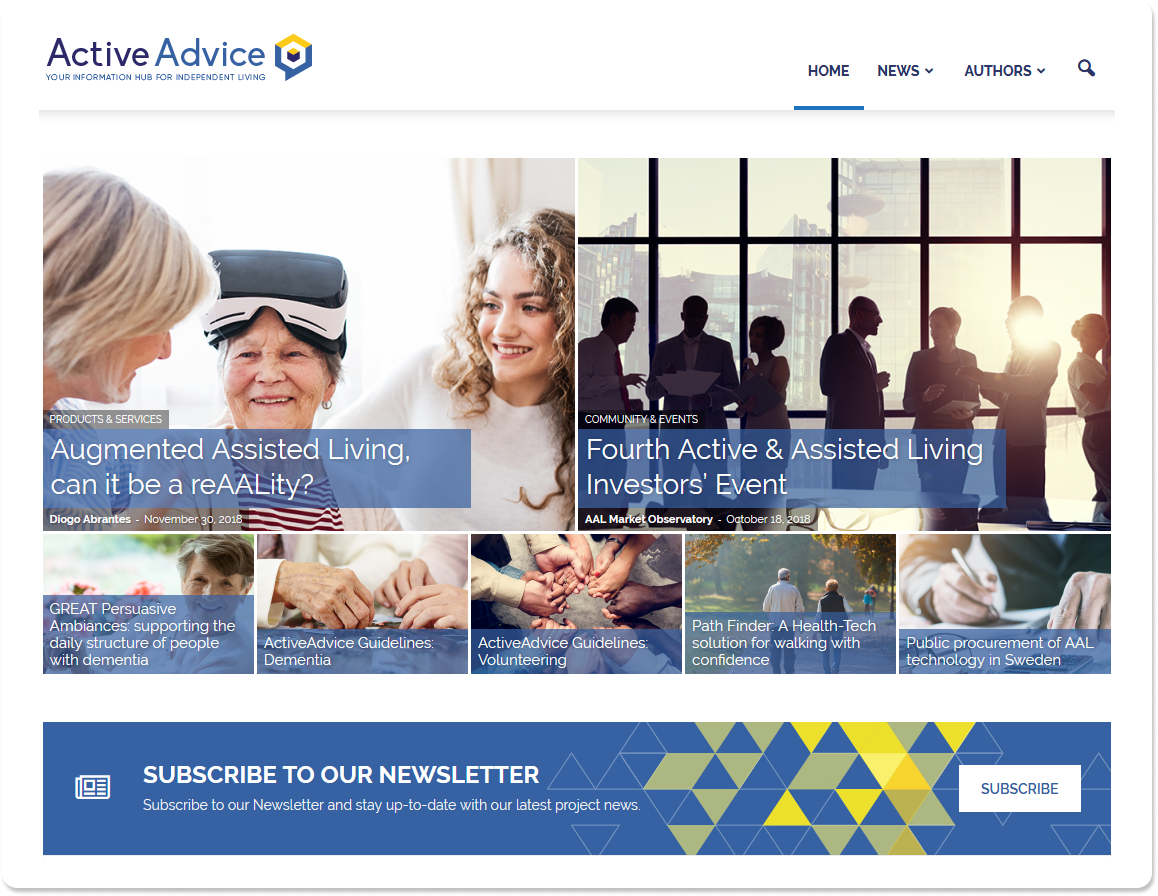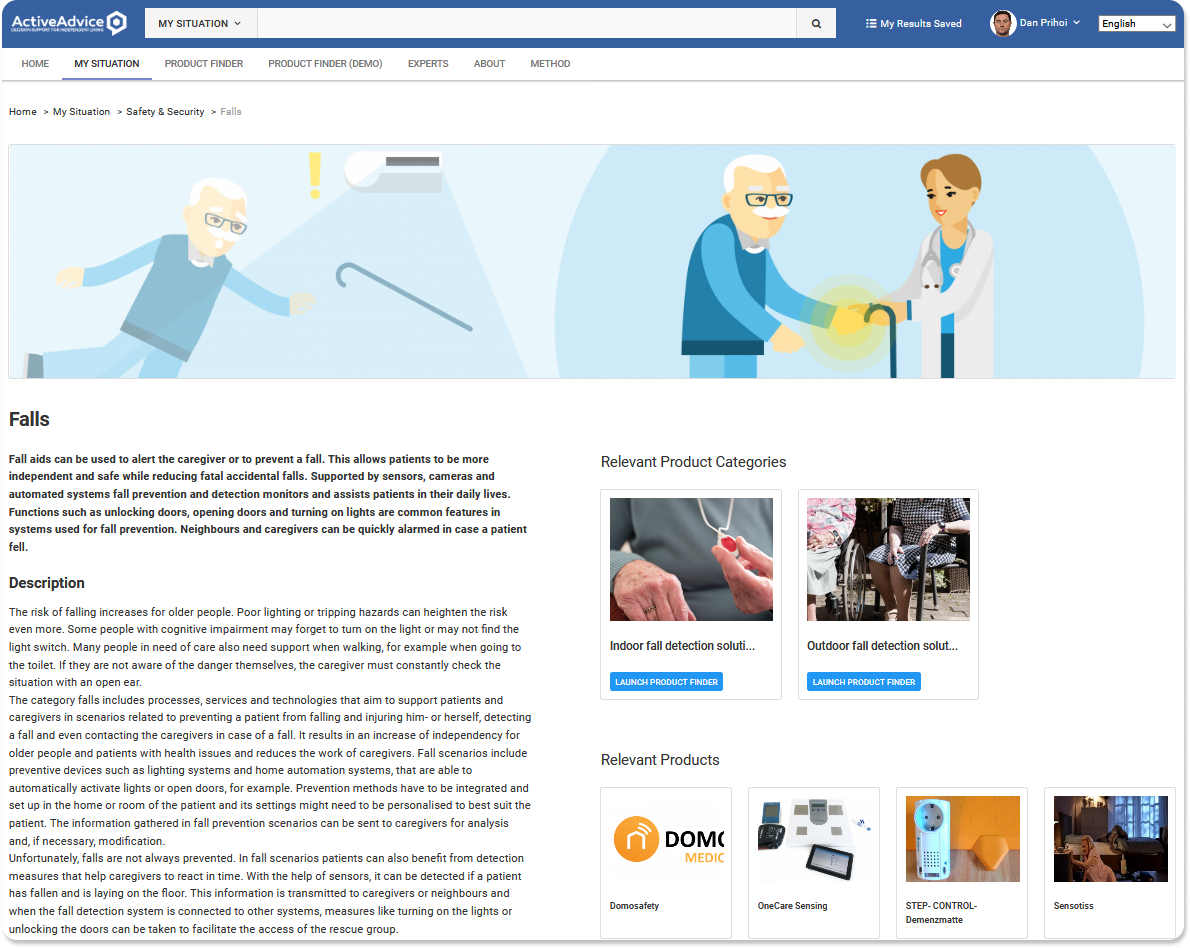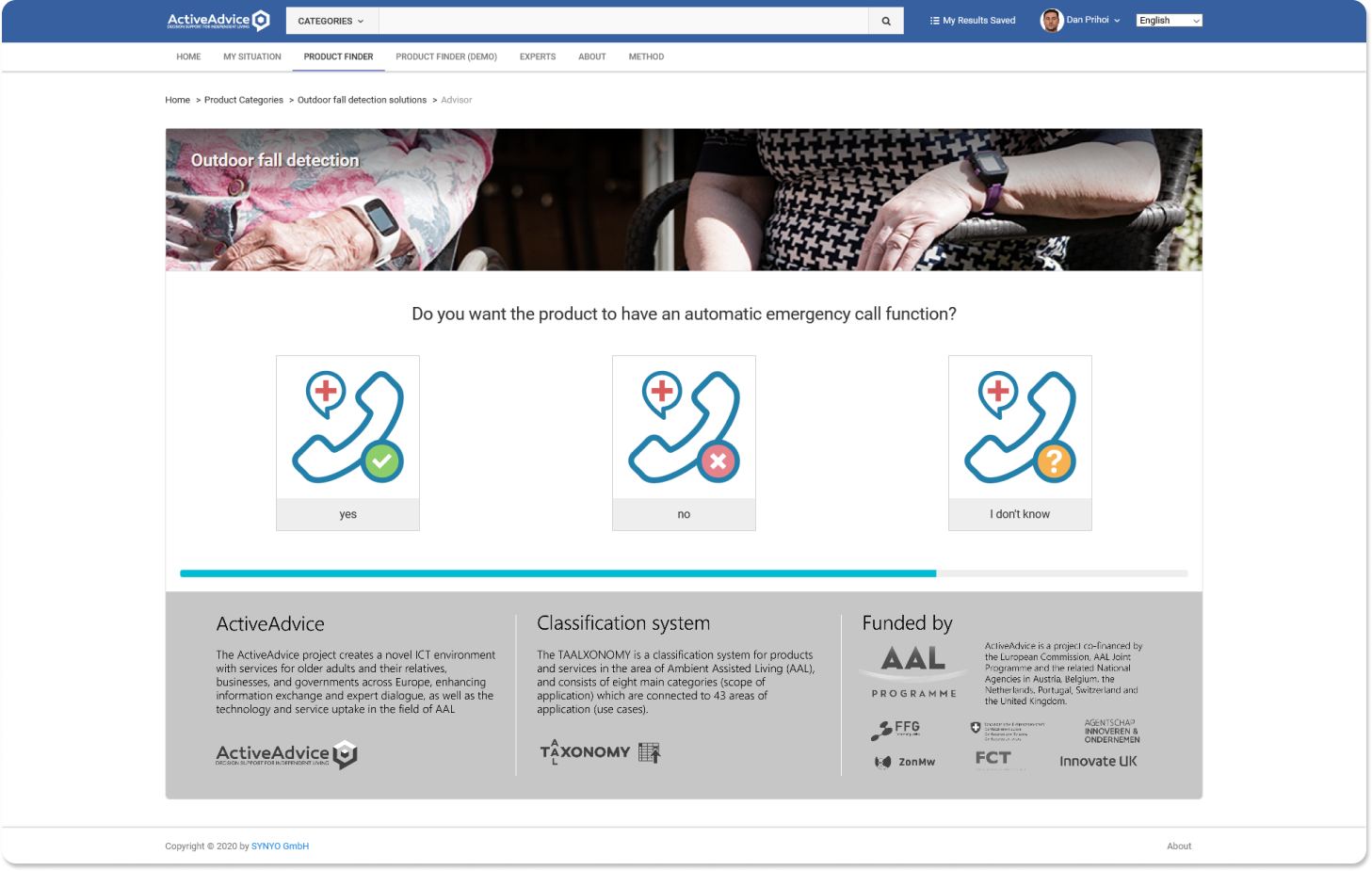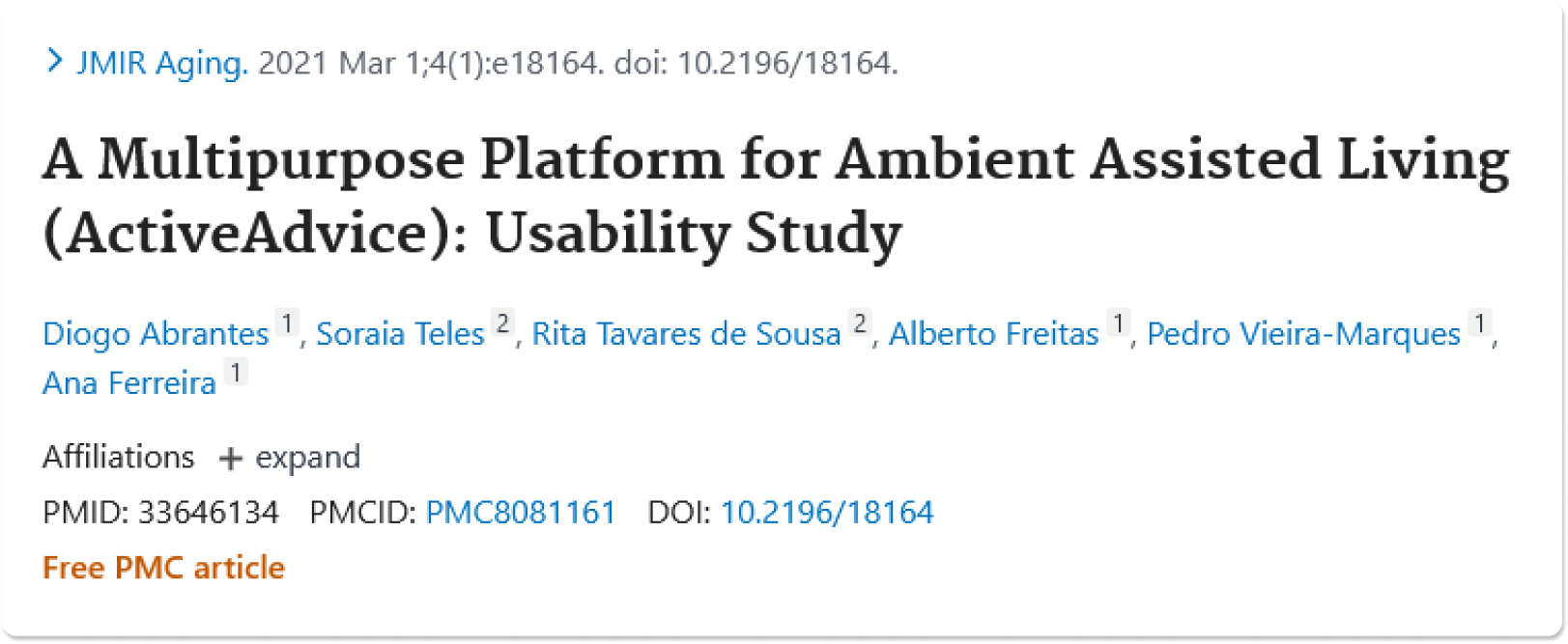Description: Based on Ambient Assisted Living (AAL) technologies coming into the spotlight as a promising approach to address the current desire of the ageing population of maintaining their independence while remaining at home, there was a need to develop an established online AAL-related products and services platform, where users can know and learn about the field, and obtain information on specific marketed solutions for certain situations or problems. Aspects such as acceptance, feasibility, functionality and usability were evaluated within the target audience.
Output: A working implemented web platform, along with a focused published paper.
Methodology: Stakeholder interviews + content strategy + value proposition mapping, competitive analysis, user interviews + focus groups + surveys, MTUAS, card sorting, user personas, IA, thematic analysis, high fidelity prototyping, usability testing + retrospective interviews + diary studies, SUS + UEQ.
Initial steps for the ideation of the web platform went through the decisions about the specification of technical and user requirements, creation of content structures and service module functionalities. All stakeholder groups (end user, business, and governmental entities) were integrated in the requirement analysis and their motivations and reasoning were understood with user interviews, focus groups, and general surveys across all participating partners, while also applying the Media and Technology Usage and Attitudes Scale (MTUAS) in order to assess their use and attitudes towards ICT. A market and competitor analysis was also carried out in order to uncover relevant AAL solutions, services, product catalogues and solution providers. Based on the quantitative as well as qualitative research done in the form of interviews with stakeholders, a value proposition was defined to list the functionalities necessary to cover the needs of each stakeholder, showing what the platform had to offer, allowing the outline the basic system components that would be part of the platform's architecture in a functional requirement list. User personas targeting all stakeholders and respective variations were also built upon the previous data. Several iterative feedback cycles for usability testing were planned with the target groups in order to collect their respective feedback and reporting common and divergent findings to further improve the digital advisors in respect of design, information flow, information architecture, or user interaction. Sessions would feature a closed card sorting (initial sessions only), an initial back and forth to discuss perceived purpose and audience, a task analysis section and a retrospective interview which included open questions concerning the participant’s feedback on key features of the platform, such as the amenity of color schemes, clarity of language, the content’s level of readability, perceived usefulness, and perceived ease of use. These also included overall impressions and missing features that they would expect to see. Participants were also asked to position themselves about their overall experience with the platform using adapted versions of the System Usability Scale (SUS) and the User Experience Questionnaire (UEQ). Transcribed verbalizations while performing the tasks and from the interviews were analyzed by performing a thematic analysis. A stable and tested version of the platform was then put online and disseminated for usage through business and governmental channels.
